For any of you that make your own popper heads for Bass, what is your method or tips? I have a lot of wine bottle corks( from dad) and Balsa. Ive heard of using plug cutters to cut sandals, but I can’t find any plug cutters. Thanks.
Ken,
I much prefer using foam over balsa and cork primarily because they last longer and float better. You can get a set of whole punches for about 7-10 bucks by looking around stores that sell lots of tools (Harbor Freight is where i got mine). On my set of whole punches I took the three largest bits and had them milled where they would fit into my drill. I also use a Dremel tool to shape the piece of foam once it has been drilled.
Good luck,
Greg
There are several methods…
-
Purchase pre-made popper bodies like these…
http://www.jannsnetcraft.com/bug-popper-bodies/ -
Make your own from balsa wood. Buy a square stick from the hobby store, like a 1/2" X 1/2" X 36" balsa stick. Using 100 grit sand paper round over the edges until you have a round dowel of the right size. Using a pencil sharpener (or the sand paper) point one end of the dowel. Cut the point off at an angle. A round sanding bit in a dremel tool can be used to form a cupped face, if desired. Using a small hacksaw blade make a slot in the bottom for attaching to a thread wrapped hook with super glue or epoxy. Paint with spray paint or brush on acrylic paint. A sharp piece of brass tube can also be used to punch dowels from a balsa wood block, just be sure to cut in the same direction as the grain. Balsa takes paint well and is very easy to shape with sand paper.
-
Make your own from foam sandels. Use a small section of brass tube to punch plugs from foan flip-flop sandles. The brass tubes are available at the hobby store, they come in many sizes 1/4" to 1/2".
You can sharpen the end with some silicone carbide (wet/dry) sand paper or a metal file. The foam cuts very easy, so it’s not much work to cut them by hand. Use a wood dowel of slightlty smaller size to push out the finished plug. If you have access to a drill press or power drill you can chuck the brass tube in it and punch lots of plugs fast. When using a drill press I like to set the depth to cut about a 1/16" short of the bottom edge, this way the plugs stay in the foam block and I don’t have to stop the drill to to get then out. I later release all the plugs by slicing off the extra 1/16" inch with a sharp razor blade. Foam plugs can be further shaped with sand paper. Some folks make a mini-lathe out of a dremel tool and turn them to final shape (do a search on ‘dremel bug’) Foam comes in many colors and thicknesses, you can laminate various colors together with contact cement for a stripped effect. Attach the finished bodies by making a small cut on the bottom surface, glue to a thread wrapped hook with super glue. -
Small corks can be purchased at most hardware stores or can be cut from old wine corks and shaped with sand paper. I don’t like cork because of the extra work needed to fill the voids before painting. I prefer to use balsa wood.
-
Larger hardware stores sell ‘foam backer rod’ to be used to fill large gaps prior to caulking. These are foam rods 3/8" to 1/2" in dia. made of a soft foam. These can be cut with a beveled end and glued right on the hook with super glue. They don’t take paint very well.
-
Learn to spin deer hair. Spun deer hair bodies make excellent poppers which are light, durable and easy to cast.
I tie flip-flop poppers alot (I call `em the Flopper Popper, lol). I use a piece of copper tubing that I sharpened one end on my bench grinder and a round file and knock the tubing thru the flip-flop sole with a hammer. A nice round foam cylinder is the result. Just beware, you’ll get funny looks in the store while you’re looking at cheap flip-flop shoes while talking to yourself, asking if this color or that color sole will look better on the hook…LOL…
A recent tie that looks crude but catches fish.

Caught these and more last week on the popper above:
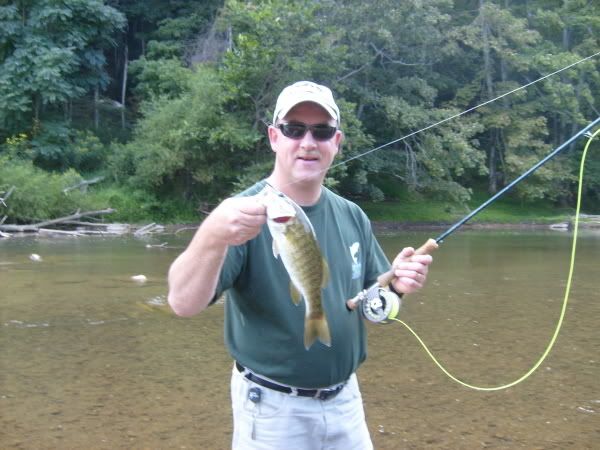
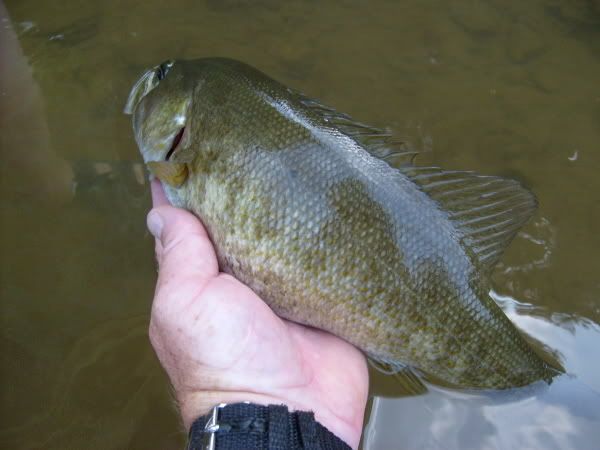
I’ll try to get the copper tubing. It seems like very good idea.
I also prefer foam over cork or balsa. I use bullet casings to punch out the poppers. You simply drill out the primer, slip in a 3/32 inch bolt and tighten the nut down on the back of the shell casing. You now have a punch that fits into any drill or drill press. To shape the poppers, I use the Dremel method that you can find here in the article written by Jim hatch. It is called Dremel bugs. You will soon be knocking out very nice popper bodies in under two minutes. I hope this helps.
I added a few photos, just to show what you can do with the Dremel bugs. Sorry about the poor photography, I’m not very good at it.



IMG]http://i72.photobucket.com/albums/i164/Jimws100/Slider.jpg[/IMG]

Jim Smith
If you use tubes you can cut a side window in it to facilitate removal of the plug.
Also note in Robert’s link the difference in smoothness between drilling and not drilling.
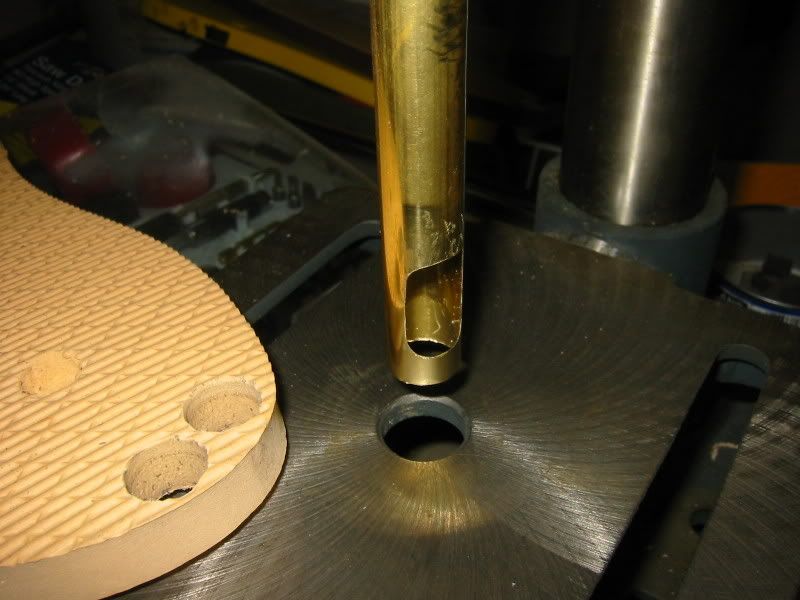
Okay folks,
After years of experimenting, I realized that most folks were going at shaping poppers backwards, using a dremel tool as a lathe rather than as a hand held grinding/shaping tool. What I am about to explain I have demonstrated in numerous conclaves and have so far made about a thousand flies – obviously some better than others, but almost all better than most I see recommended on pattern sites. This approach is good for small panfish flies up to large tarpon flies. You get a smooth finished product.
If you want any details I don’t explain below, don’t hesitate to message me.
If you go to http://www.flytyingforum.com/pattern6910.html you will find what is likely the ultimate solution to popper making. I tried to provide as much detail in the instructions with that pattern as possible.
Note that super glue changes the chemical composition of the surface of closed cell foam and joining two pieces of foam with super glue creates one piece – in other words, it’s permanent.
Note also that if you go to Harbor Freight or www.harborfreight.com and buy a “9 Piece Hollow Punch Set” you can carve out cylinders of foam in 9 sizes for $5. You can shape the cylinder after punching with the dremel.
DO NOT try to make poppers out of flip flops. The interior foam is not dense enough to make a satisfactory fly. See foam buying instructions in the referenced pattern.
Nice poppers and a very nice tutorial Bob. Much appreciated!
However, to say DO NOT try to make poppers out of flip-flop soles is, well…a wee bit crazy.
I readily admit punching foam cylinders out of flip-flop soles and not smoothing them up with a dremel tool do not “look” as nice and slick as the foam poppers in your tutorial, but what do the fish think? Or is the nice, lovely finish for our eyes and not the fish?
For the last several weeks I’ve been really smackin’ river smallmouth bass with poppers I’ve tied from flip-flop soles. Gritty smallies on the end of my fly line, with a flip-flop popper in their lip is proof enough for me that they WORK!
Just my $0.02.
All the shaping, glueing, painting and adding tails and legs has gotten to me…I now just tie craft foam gurgler type patterns, the tails are added to the hook along with the hackle or dubbed underbodies and the legs are incorporated right along with the foam bodies.
Add some Fleximent along the bottom of the fly and they will hold up to 75 or so smallies.
They seem to cast easier and are VERY effective topwaters as well.
I’m with DarrinG on this one. I’m a bit confused about the statement; “DO NOT try to make poppers out of flip flops. The interior foam is not dense enough to make a satisfactory fly.”
I’ve been making poppers and sliders out of flip flops for about four years now, for use in both fresh and salt water and I’ve never experienced any problems. Occasionally, I have experienced some delamination between glued layers on the extra thick flip flops (especially in black), however, this happens as I drill/punch out the holes and I just make smaller poppers out of the pieces. DarrinG is also right about not having to finish them up slick with paint and epoxy. The fish really don’t care. I do mine that way because it’s another creative outlet for me. Just another $0.02 tossed into the hat.
Jim Smith
Man I wish Jim Hatch would jump in here on your statement “DO NOT try to make poppers out of flip flops. The interior foam is not dense enough to make a satisfactory fly.”
I don’t know what kind of flip flops he gets but there was a rush of people asking for tips and what his dremel set up was. I’ve even posted the link to several other fly fishing boards and everyone was impressed with it.
Maybe you just got some bad flip flops.
Fatman
The interior layer of many flip flops is spongy to make the sandals more comfortable to walk in. Good closed cell foam has very little give. I wasted a lot of money making spongy poppers before finding out about softtiles.com where I can get better materials for a lot less money than buying flip flops.
It’s kind of like wine. In school you though Boone’s Farm was swell. But once you get a hold of a good Merlot…
From my experience, when I make (tie) a foam popper using the foam sandal (or flip flop) and using the copper tube method then the type of foam (as long as its floating foam) does not make a difference since I am not shaping the foam (only cutting foam cores). But when I want to shape foam on the Dremel or other tool by rotating a foam plug, the foam does make a difference. To shape foam, I need to make sure the foam is actually closed cell foam (rough in texture throughout) and not foam rubber (smooth in texture). If I tried to shape foam rubber (or a foam with a higher content of foam rubber) then the foam piece would glaze (loose friction, smooth out and spin) on the needle mandrel when I tried to spin the piece. The closed cell foam works for shaping because it has friction on the mandrel so the piece will rotate without spinning on the mandrel. There are many different kinds of foam, closed cell foam (floating) along with foam rubber, open cell foam (sinking), styrofoam, etc.
I use to spend hours making cork poppers and very nice ones at that. I mean no disrespect to anyone who enjoys that activity. I would rather be fishing. Let me tie up a couple of dozen Gurgle Pops in one evening and spend the rest of the month fishing them. Just me 2% of a dollar. Others will disagree; they always do. 8T ![]()
I don’t paint my poppers that I make from lobster buoy foam, they don’t get eyes, and the only shaping they get is a couple of swipes with a razor blade
The fish can only see whatever color is on the belly anyways and eyes are a waste of time
After I punch out a cylinder of foam it take only a few minutes to put the popper together…probably less time than it takes to build a gurgler.
That said, I’m convinced that a gurgler is the better lure the majority of the time. :rolleyes:
Well I bought the foam heads and really was happy with the results so far. These were some of the first ones I ever made.
Skip
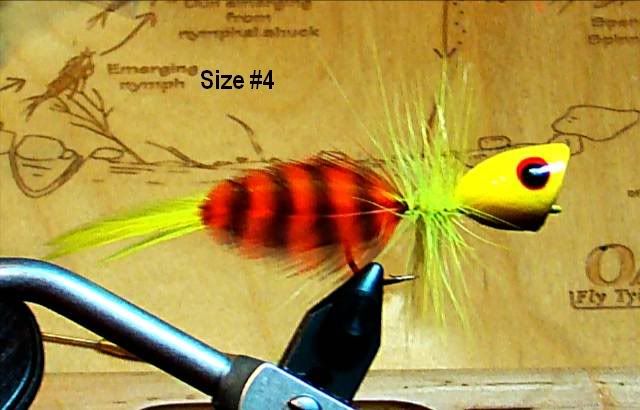
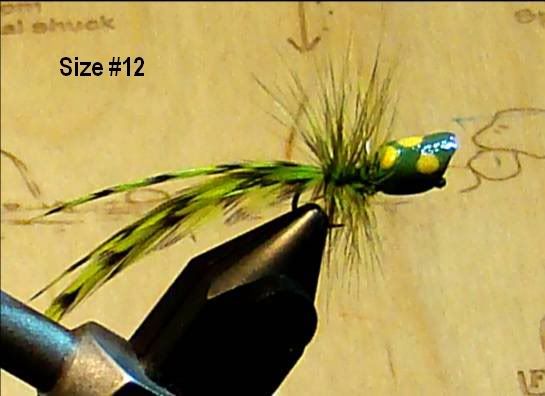
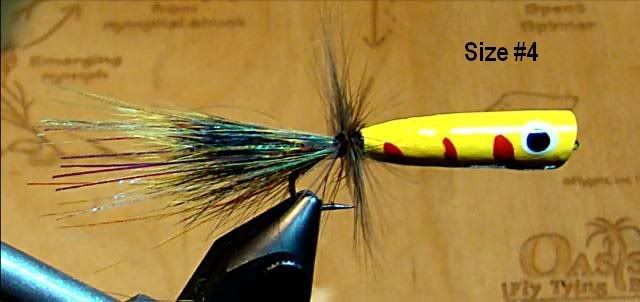
And my very first one…
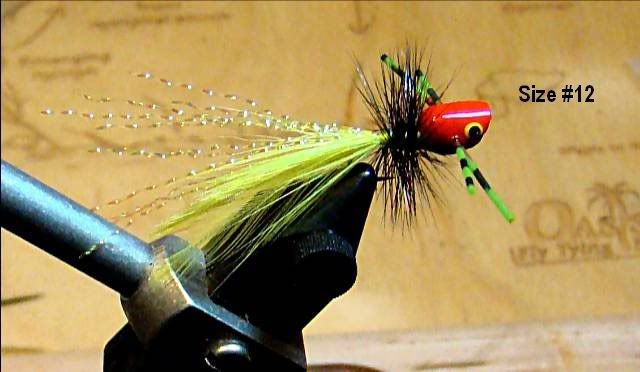
Bob,
That was a fine set of pics/info you put up here. Thanks. I marked it for use later.
James Smith, same goes for the pictures you shared. Some great looking flies.
We all know that all you need do is glue/wrap some old junky foam and a few hackles on a hook to get great action topside. The fish rarely care but putting that much more care into it makes it all the more fun…and that’s what we do this for!
Nice job fellahs.
Jeremy.
You must be buying the more expensive flip-flops. All the ones I have bought from the dollar store at the end of summer are solid EVA foam all the way thru. (EVA is less compressible than many foams.) They are wonderful, even better than the interlocking floor mats I have used.
I usually coat them in sally hansens just so they don’t soak up water too fast when the Bass crush them under water!
Oh, and I LOVE using the dremel as a lathe too, while I cannot do a flat side, that is easy to add after pulling off the lathe, and I can do Jim’s pig in 3 peices! ![]()
